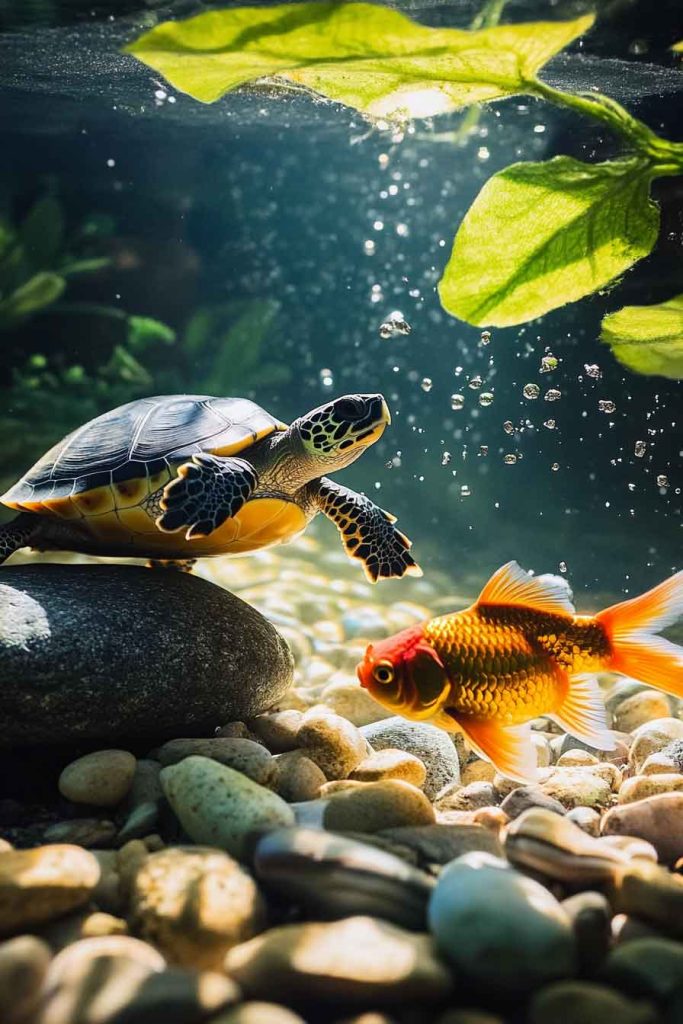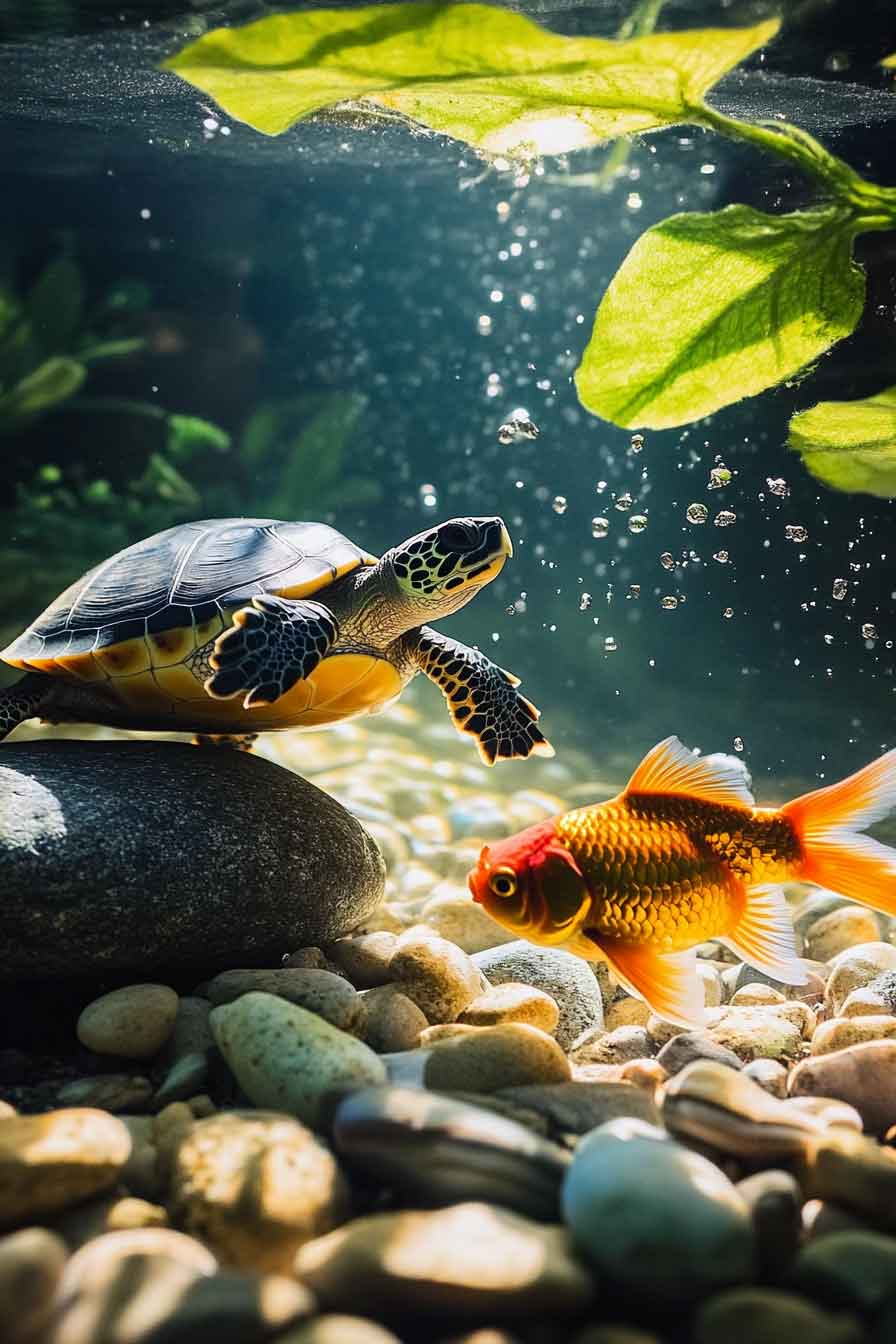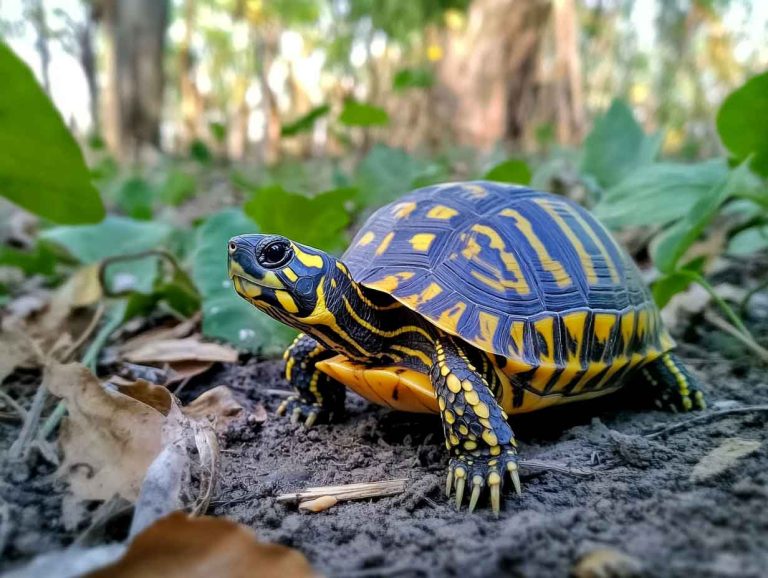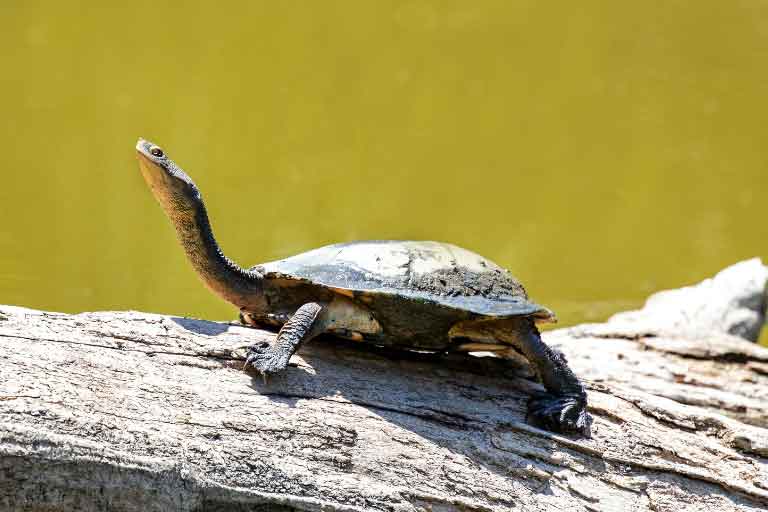Why Is My Turtle Swimming Frantically? | 9 Reasons Your Turtle Is Restless & How to Help
I still remember the first time I walked in and saw my turtle swimming like mad—darting back and forth, paddling against the glass like he was trying to escape. It wasn’t the calm, confident swimming I was used to. It was frantic. And honestly? It freaked me out. Was he scared? Sick? Angry? Bored? At…
I still remember the first time I walked in and saw my turtle swimming like mad—darting back and forth, paddling against the glass like he was trying to escape. It wasn’t the calm, confident swimming I was used to. It was frantic. And honestly? It freaked me out.
Was he scared? Sick? Angry? Bored?
At first, I chalked it up to “turtle zoomies,” if such a thing exists. But then it happened again. And again. That’s when I knew it wasn’t random. My turtle was trying to tell me something—and I just wasn’t listening yet.
So I started tracking his behavior. I watched him in silence during different times of the day. I checked my tank setup from top to bottom. I changed a few things. I asked other turtle keepers, and I even called a reptile vet.
What I found was this: restless swimming isn’t just “weird turtle behavior.” It’s a message. And once I understood what might be behind it, I was able to fix the problem—and help my turtle feel safe and calm again.
Is It Normal for a Turtle to Be Active in the Water?
Yes—turtles are strong swimmers by nature, especially aquatic species like red-eared sliders, cooters, musk turtles, and painted turtles. They enjoy gliding, diving, and climbing. So some movement is completely normal, especially when they’re:
- Exploring their environment
- Looking for food
- Adjusting to new decor
- Following you near the tank
But there’s a difference between healthy activity and frantic, restless motion.

What Restless Turtle Behavior Looks Like
If you’re wondering whether your turtle is just active or genuinely unsettled, here’s what I’ve observed in my own turtles (and heard from countless other keepers):
Common Signs of Frantic or Restless Swimming:
- Swimming along the same section of the glass over and over again
(especially near the front or corners, like they’re trying to “get out”) - Constant paddling at full speed with no pause
- Basking area pacing or quick climbing up and down repeatedly
- Clawing at the filter, basking ramp, or rocks
- Digging obsessively at the bottom of the tank or substrate
- Jerky, reactive movements when approached
- Staying alert and overly stimulated even at night
If your turtle is showing multiple signs of this kind of behavior for several hours per day—or several days in a row—it’s time to dig deeper. In my experience, turtles don’t act like this for no reason. There’s always a cause.
Why Is My Turtle Swimming Frantically? 9 Common Causes
Now that we know frantic swimming isn’t random, let’s break down the most common causes I’ve encountered as a long-time turtle keeper—and how you can troubleshoot each one.
1. Tank Size Is Too Small
This is a huge factor, and one of the first things I look at when a turtle starts acting restless.
Turtles—especially sliders and other aquatic types—need room to move. If your turtle is outgrowing its tank, it may begin swimming against the glass trying to find more space.
Rule of thumb:
You need at least 10 gallons per inch of shell length. So a 5-inch turtle should have a 50-gallon tank minimum. I know that sounds like a lot, but turtles are highly active and need both horizontal swimming room and depth.
2. Water Quality Issues
Poor water conditions can lead to serious stress, and your turtle might show it by swimming chaotically or trying to “escape” the tank.
Check for:
- High ammonia or nitrate levels
- Cloudy or foul-smelling water
- Algae build-up
- Malfunctioning or dirty filters
When I had a brief filter failure, my turtle became incredibly restless within 24 hours. Once I did a partial water change and replaced the filter media, his behavior settled again.
Use a reptile-safe water testing kit to check regularly, and aim for:
- Ammonia: 0 ppm
- Nitrites: 0 ppm
- Nitrates: <40 ppm
- pH: 6.5–8.0 (varies by species)
3. Temperature Fluctuations
Turtles are ectothermic (cold-blooded), so their activity levels are directly influenced by water and air temps.
If the water is too cold, they may move less—or panic as their metabolism drops. If it’s too hot, they’ll try to escape it by swimming frantically or refusing to bask.
Ideal ranges for most turtles:
- Water temperature: 75–80°F for adults (higher for hatchlings)
- Basking area: 85–95°F
- Air temperature: 75–85°F
Use a digital thermometer for both water and basking areas—not just guessing based on feel.
4. Glass Surfing (Turtle Reflection Confusion)
This one surprised me the first time I saw it. Turtles don’t always recognize their reflection—and sometimes they mistake it for another turtle. That leads to either:
- Curiosity (trying to swim toward the “other turtle”)
- Territorial behavior (trying to chase or ward it off)
If you notice your turtle swimming against the same panel of glass repeatedly, especially when the room is bright, try adding background paper or decor to reduce reflection.
5. Mating Instincts or Hormonal Behavior
During certain times of the year—especially spring—male turtles can become extremely restless due to natural hormonal shifts.
Signs include:
- Constant swimming
- Claw fluttering near tank mates (or even the glass)
- Obsessively pacing or circling
This is more common in mature males, and while it’s not dangerous, it can be frustrating. Adding enrichment, blocking outside visual cues (like other pets or mirrors), and adjusting light cycles can help manage it.
6. Poor Tank Layout and Visibility Stress
One thing many new turtle keepers overlook—how the tank is laid out. I didn’t think about this either until I noticed my turtle swimming frantically every time someone walked by.
Turtles value safety. If their tank is completely open (glass on all four sides) and there are no hiding spots, it can cause them constant stress. Think of it like living in a glass house with no curtains—there’s no place to decompress.
Common triggers from poor layout:
- Bright lights with no shaded areas
- Lack of visual barriers
- No caves or plants to hide behind
- Being placed in high-traffic areas of the home
Fix:
Try covering three sides of the tank with dark background paper or aquarium wrap. Add leafy floating plants or a basking dock with a tunnel underneath. When I gave my turtle more coverage and structure, his stress behaviors dropped significantly in just a couple of days.
7. Overstimulation from Outside Environment
Another subtle reason your turtle may be swimming frantically is overstimulation from the environment—even things you don’t think about as stressful.
Examples:
- TV screens or flashing lights near the tank
- Loud noises or vibrations from speakers
- Constant movement from kids, pets, or foot traffic
- Bright room lighting at night
Turtles are extremely sensitive to their surroundings. They might not show fear like mammals do, but their swimming patterns change dramatically when they feel overwhelmed.
Fix:
Place the tank in a quiet, low-traffic corner. If your turtle’s tank is near speakers or windows, consider relocating it or adding soundproofing. Keep lighting consistent with a timer (daylight for 10–12 hours, darkness at night).
8. Loneliness or Confusion About Reflections
This one surprised me when I learned about it. If your turtle sees its reflection often, it may interpret it as:
- A potential mate (leading to persistent activity)
- A territorial rival (causing stress or aggression)
- Another turtle it’s trying to interact with
This is especially common in male turtles during mating season. They’ll swim up and down the glass, flutter their claws, and act like they’re “dancing” at the wall.
Fix:
Break up the reflection by adding background paper, applying a frosted film, or rearranging tank decor. In some cases, a small mirror placed briefly on the side of the tank for enrichment (no more than 5–10 minutes a day) can help them “get it out of their system”—but overuse can backfire.
9. Chronic Stress or Internal Discomfort
If none of the above fixes work and your turtle is still behaving like it’s in distress, there’s a chance something deeper is going on.
Look for other signs alongside restlessness:
- Excessive yawning or gulping at the surface
- Swollen eyes or shell abnormalities
- Floating lopsided or struggling to dive
- Refusing food for multiple days
- Persistent pacing even in dim light
At this point, I strongly recommend seeing a reptile vet. Conditions like respiratory infections, intestinal blockages, vitamin imbalances, or parasitic infections can all start with behavioral changes—long before physical symptoms show up.
How I Calm My Restless Turtle (A Complete Action Plan)
Over the years, I’ve built a 3-step routine to address turtle restlessness. It has worked reliably across multiple tanks and turtle species:
✅ Step 1: Recheck the Environment
- Test water with API test strips or liquid kit
- Verify tank size meets 10 gal per inch of turtle length
- Measure water temp (should be 75–80°F)
- Confirm basking temp (85–95°F with UVB)
- Ensure tank has shade, depth, climbing surfaces
- Cover 2–3 sides of the glass to reduce visual stress
✅ Step 2: Improve Enrichment and Routine
- Add new objects weekly: rocks, tunnels, floating platforms
- Offer treat hunts: leafy greens clipped to suction cups
- Rearrange decor regularly to give them “new paths”
- Allow supervised out-of-tank exploration in a dry space
- Stick to a consistent feeding and lighting schedule
✅ Step 3: Monitor Closely for Health Red Flags
- Watch for sudden changes in swimming depth or posture
- Look for loss of appetite or bloating
- Track basking time—too much or none can both be red flags
- If behavior doesn’t improve within 3–5 days, consult a vet
Final Thoughts
Frantic swimming isn’t just “weird turtle behavior.” It’s communication. It’s your turtle’s way of telling you something isn’t quite right—whether it’s the tank, the environment, or their health.
In my case, my turtle’s restlessness taught me how to slow down and really observe him. Once I stopped treating the tank like a static setup and started adjusting based on his behavior, things changed. He became calmer, more curious, and honestly, happier.
So if your turtle seems like it’s swimming laps out of frustration, don’t ignore it. Investigate. Adjust. And keep listening—because your turtle is always trying to tell you how to help.







